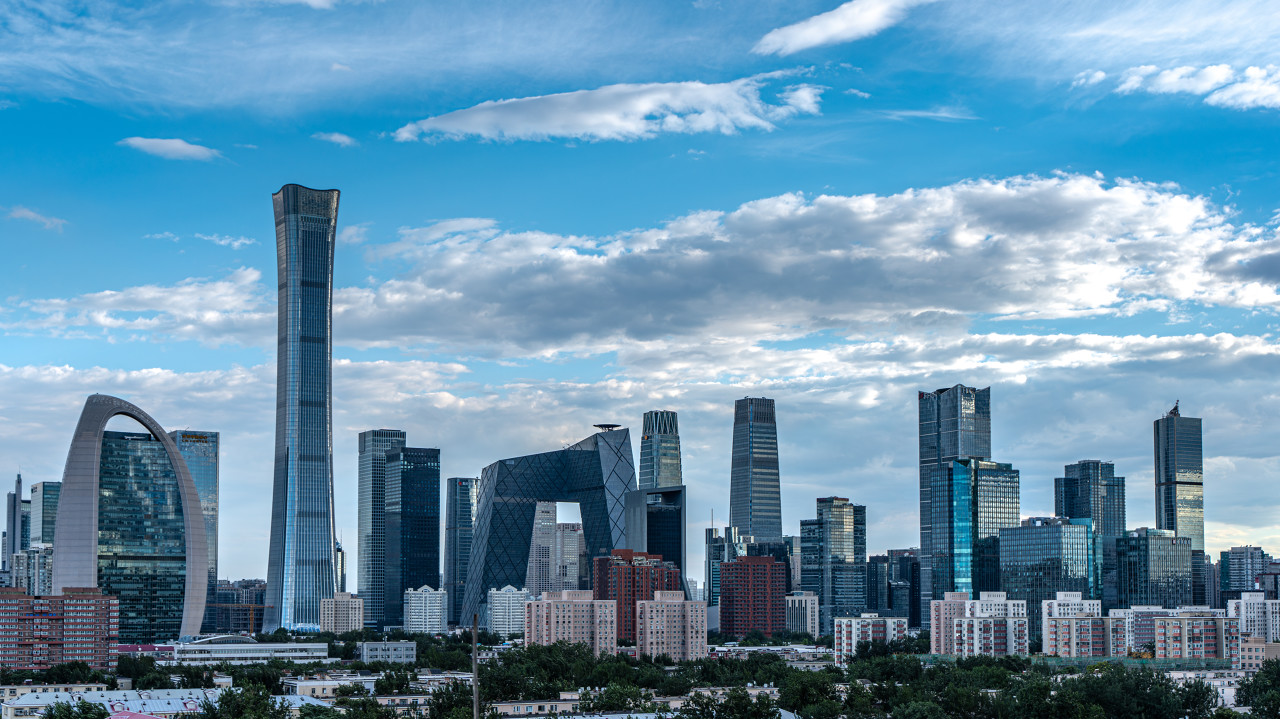Authors: Li Haitao and Lin Xi
Since the Russian invasion of Ukraine, global capital markets have taken a plunge – natural gas prices have been surging in Europe, the London Metal Exchange has seen the unprecedented short squeeze in nickel, and U.S. stocks have tumbled. Capital markets have responded pessimistically in response to the uncertainties surrounding the Russia-Ukraine situation.
China A-shares have followed a similar trend, declining sharply and heading into bear market territory. A-shares fell mostly due to uncertainty and risk aversion, not because they are in a downtrend. Instead, the time is coming that investors added more A-shares in their asset allocation.
Chinese Stocks Enter a Period of Risk Aversion
Since January, China A-shares have retraced. This is firstly due to an expected fall in U.S. stocks as a result of the Fed increasing interest rates. Secondly, successive defaults of Chinese real-estate enterprises cast doubts over the Central Bank’s “loose credit policy”. Shares also tumbled with the drop in consumption and the halted operations of businesses in affected areas due to the sporadic COVID-19 outbreaks during the Chinese New Year. By February it seemed as if the stock market had bottomed out as reports came in that total social financing in January had increased to RMB 6.17 trillion. However, on February 24th the Russia-Ukraine war started to escalate, causing China A-shares to follow the declining trend in U.S. stocks. This led to a jittery and risk-averse Chinese stock market.
Stock markets did not anticipate the situation between Russia and Ukraine, which has caused a market sell-off as investors seek to hedge risk. Moreover, A-shares suffered from various investor structural problems, such as a shortage of institutional investors and industrial mutual funds. Also, due to fund rankings and margin pressure, reducing a position to assess the situation is often the first reaction in a time of uncertainty. It may trigger a short squeeze. After a two-day rebound following the fall, it became clear that the war in Ukraine would last longer than anticipated. Subsequently, investors cut their positions further to hedge the risk.
The continuation of the Russia-Ukraine conflict has far exceeded initial expectations, but its influence on China is limited. Currently, market insight into the situation is somewhat insufficient. The situation involving various complex geopolitical issues is very complicated, which cannot be resolved in the short term. In terms of trade volume, the situation has limited effect on China since Russia and Ukraine only account for 3% of China’s exports. However, Europe and the United States make up 30% of China’s exports, a number that the Chinese market will be more concerned about. This is in addition to other concerns such as insufficient easing of policies in the property sector, the negative impact of high prices on consumer spending, a slowing economic growth, and declining A-shares due to risk-aversion.
China A-Shares are Due a Comeback
A-shares have fallen against the backdrop of global geopolitical tensions. However, we believe that they have reached the bottom, and we will henceforth see an increase in portfolio allocation. A-shares’ current positions have mainly been affected by risk appetite, and less impacted by interest rates and corporate profits. We believe the main reason for an increase in A-share allocation is that the easing of monetary policy will drive up corporate profits.
The first reason to be optimistic relates to monetary policy. Credit loosening will lift A-shares, and it is also expected that the year-on-year growth rate of social financing in 2022 will reach 11%. The Central Economic Work Conference, held on December 8-10, 2021, set out that “stable monetary policy should be flexible, and maintain an appropriate level of liquidity.” Moreover, the Government Work Report, delivered on March 5th, 2022 at the annual Two Sessions, set out that “money supply should increase with nominal GDP growth”. Therefore, maintaining stable growth and a moderately loose monetary policy will be the general tone for 2022. Many doubts surrounding “lose credit” were dispelled after the government introduced RMB 6.17 trillion in social financing in January, beating the target of RMB 5.60 trillion.
Secondly, A-shares will rise due to the marginal easing of China’s real estate policy. Infrastructure investment will hedge against the decline in consumption and exports, whilst also gradually stabilizing the Purchasing Manager’s Index (PMI). Although housing sales have completely recovered, various regions in China have implemented marginal easing of real estate policies. On March 4, the Tangshan city government in Hebei Province announced that for employees purchasing a second self-occupied home, the minimum down payment will be reduced from 60% to 30%. On the same day, several banks in Dezhou, Shandong Province, also lowered the down-payment requirement from the previous minimum of 30% to 20% for self-occupied housing. In Kunming, Yunnan Province, down-payment requirements have also been relaxed – buyers can now enjoy a low mortgage down-payment of 20%. Furthermore, on March 1, Zhengzhou became the first city to implement a policy of no longer recognizing previous loans when applying for a second mortgage.
In terms of infrastructure, although the national deficit fell to 2.8% of nominal GDP, the government has transferred about RMB 1.2 trillion out of its general budget accounts and received RMB 1.65 trillion in profits handed over by selected state-owned financial and other specialized institutions. With government spending expected to increase by 12.8%, in addition to the RMB 1 trillion of unused special debt from last year, it is expected that fiscal expansion this year in China will be higher than expected.
Thirdly, inflation may suppress downstream consumption, but China’s inflation is relatively controllable, and there is no risk of energy supply interruption at present. Although the Producer Price Index (PPI) fell in February, PPI and the Consumer Price Index (CPI) are under control. In the coal sector, the National Development and Reform Commission will increase the release of high-quality production capacity while ensuring price stability. Since mid- to late-February, China’s daily coal production has continued to remain at 12 million tons per day, a year-on-year increase of 10%. Coal storage in power plants operated across the country still sits at a historic high of 149 million tons, an increase of more than 30 million tons during the same period last year, representing 22 days’ worth of coal demand. In terms of oil and gas, China has diversified its imports, and there is currently no supply cut-off between China and Russia. Russia accounts for 15% of China’s crude oil imports (about 80 million tons a year), and 3% of natural gas imports. Additionally, global supply chain pressures have eased – for example, the Shanghai Containerized Freight Index has begun to decline since February (this index is seen as a benchmark for global freight trends and measures the spot rates for 40-foot containers).
The concerns in capital markets are that continued Russian military action could lead to further sanctions and potential global stagflation. However, we currently do not see this as a significant risk.
Will there be Global Stagflation?
An important predicate for global stagflation is insufficient production and falling demand. However, this occurs when production falls faster than demand, resulting in prolonged high commodity prices, and as a result stagflation. This happened in 1979-1980 when the Iranian Revolution led to oil shortages and sustained inflation, which forced the U.S. economy into a recession.
The main causes of stagflation in 1979-1980 were the depreciation of the dollar and a shortage of commodities. After the overthrow of Shah Pahlavi during the Iranian Revolution in November 1978, Iranian oil exports went down from 4-5 million barrel per day (mb/d) in September to 1 mb/d. During that time, Saudi exports had actually increased from 8.5 mb/d to 10.5 million mb/d.) On Christmas Day, 1979, Iran officially turned off the taps, completely shutting off oil exports. The spot price for oil rose from USD $15.00 per barrel at the beginning of 1979 to USD $40.00 per barrel in early December 1980. U.S. production was also weak, and the world did not have the oil capacity to fill the gap left by Iran. This resulted in exponential oil prices. Moreover, the dollar had been susceptible to depreciation since the collapse of the Bretton Woods System in 1971. A weak dollar increased OPEC’s willingness to raise prices – this led to persistently high inflation and created the most significant stagflation crisis in history.
However, the situation today is different. Although western sanctions on Russia have led to a decline in Russian oil exports, the deficit that this has left in the global economy can be filled in the near future by other means. Russia exports approximate 5.5 mb/d and the sanctions placed on Russia by the west have reduced this by around 3-4 mb/d. In the short-term, this will have a large impact. But over the long-term, even if the Russia-Ukraine war does not slow down and the West continues to impose sanctions, there are many alternatives to supplement the crude oil shortages. OPEC+ can increase its production capacity (in the short-term, it can increase supply by 2mb/d), Iran can produce more through agreements (which can increase crude oil production by 1.6mb/d), and U.S. can improve its shale oil production (which in the mid-term can increase supply by 0.4 mb/d). As for crude oil demand, there will be no increase in crude oil demand in 2022, according to a report released by the Energy Information Administration (EIA). It will stay at approximately 102 mb/d. With the Fed interest rate hikes and the encouragement to invest in renewables, we estimate that global crude oil demand will remain at around 102-103 mb/d.
China A-Shares Will Be a Good Hedge
The possibility of the Russia-Ukraine conflict spreading outward is low, and China’s involvement is also highly unlikely. In 2022, China’s policy will be focused on stabilizing the economy, so there is no need to be too pessimistic about its A-shares market.
On March 5th,2022, the Government Work Report set its economic growth target at 5.5%, a deficit-to-GDP ratio target of 2.8%, an inflation target of 3%, an urban surveyed employment rate below 5.5%, and money supply aligned with nominal growth.
We believe that the 5.5% economic growth target is a positive sign (considering that in 2021 the economy grew 4.9% in the third quarter and 4% in the fourth quarter). Increasing infrastructure investment to hedge against a decline in real estate investment and consumer spending, has become an important means for the government to “stabilize the economy,” especially against the backdrop of possible declining exports, restrictive policies in the property sector, and this weak consumption in the short term due to COVID-19 lockdown measures.
Although this year’s deficit-to-GDP ratio has been reduced to 2.8%, the government has released RMB 1.2 trillion from its general budget accounts and freed up RMB 1.65 trillion in profits for state-owned and other specialized financial institutions. The growth rate of government fiscal expenditure is now forecast to reach 12.8%, and added to this is the RMB 1 trillion in unused debt from 2021, which means that government spending is likely to be higher than previously expected. Currently economic activity is expected to be strong in terms of the Construction Price Mangers’ Index (PMI) – the Construction PMI in February was 57.6, up from the previous value of 55.4. Construction business activity is also expected to recover to 66, up from 64.4.
In summary, with the continuous introduction of policies and the expectation that social financing will pick up, the economy only needs some time to stabilize. What is certain is that this year’s infrastructure investment will significantly increase compared to last year, and that commodity prices are likely to fall following Fed interest rate hikes. How long the Russia-Ukraine conflict will last is still uncertain – but from an investor’s point of view, it is worth hedging against.
Li Haitao is a Dean’s Distinguished Chair Professor of Finance and Associate Dean at Cheung Kong Graduate School of Business.
Lin Xi is a research manager at Cheung Kong Graduate School of Business.




















